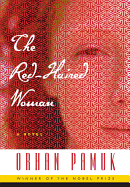
Orhan Pamuk (My Name Is Red), who won the Nobel Prize for Literature in 2006, writes of his native Turkey in The Red-Haired Woman. At first, the story is narrated by a young boy named Cem, whose father, a leftist dissident, is taken to prison. Desperate for money, Cem finds a job as an apprentice for a renowned well digger, Master Mahmut, in the small town of Öngören. The two work together on a barren plateau to find water for a client. They become like father and son, and at night they visit the town for supplies and leisure. That's where Cem meets the alluring "red-haired woman," who is part of a traveling theater troupe. As he falls in love, his obedience to his master and the well wavers, precipitating a tragic accident that follows him into adulthood and shapes his destiny.
Pamuk writes with the lean, archaic simplicity of parable, gradually adding moral weight to his tale with each successive chapter. Cem and Mahmut's search for water takes on mythical qualities. In the red-haired woman's narrative section, she comments on the prevalence of Oedipal struggle: "Whether it was fathers killing their sons, or sons killing the fathers, men always emerged victorious, and all that was left for me to do was weep... the logic of the universe turns on the tears of mothers."
The Red-Haired Woman is a novel of uncommon moral power. It blends myth and life, fatalism and freedom, into a harrowing literary experience. It's the work of a master writer. --Scott Neuffer, writer, poet, editor of trampset

